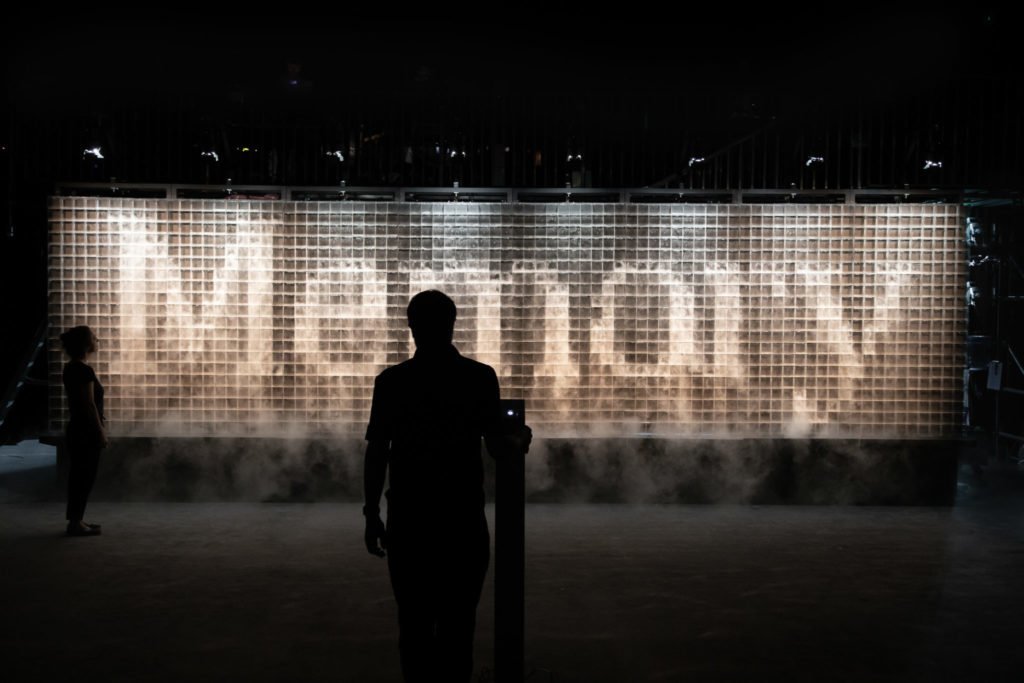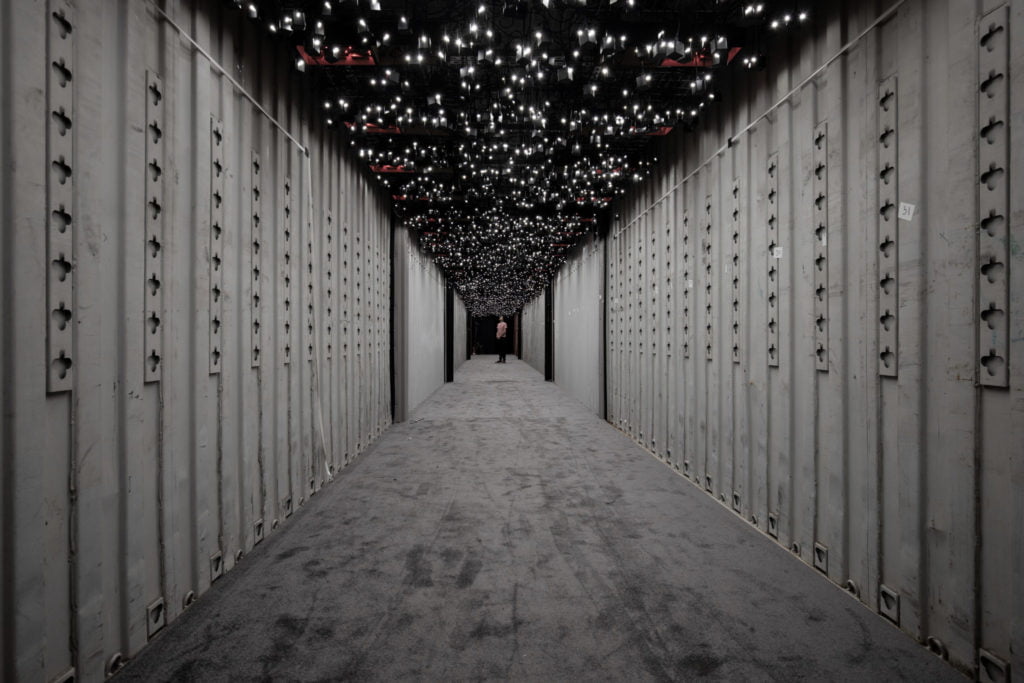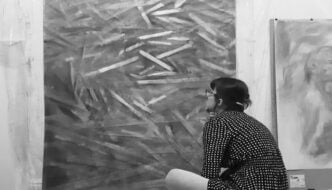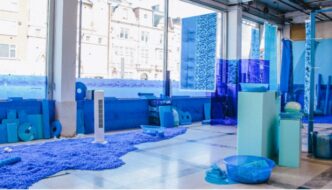
©Mariana Yáñez
Gabriella Warren-Smith, researcher of all things art and digital (who you might remember from our interview), looks back on her experience at the interactive installation organised as part of MIF19.
My first visit to Manchester International Festival 2019 began with ‘Atmospheric Memory’, an immersive environment by artist Rafael Lozano-Hemmer, curated by FutureEverything and Manchester’s Science and Industry Museum. Enclosed in a large metal chamber, visitors were free to roam around this cavernous space, encountering museological displays and interactive scientific experiments. Covering the four walls and ceiling were the dynamic projections of ‘The Atmospheres’, drawing the visitor’s gaze upwards and around.
This was a complex work, created through five years of development, research, experimentation and technical design. Its roots are rich in history, drawing from the imaginative ideas of inventor Charles Babbage, who in 1837 proposed that sound can be imprinted into the air through the motion of one’s breath. He describes how the air then becomes a ‘vast library’ in which one can retrieve the lost voices of the past.
‘Atmospheric Memory’ revived this idea by inviting visitors to imprint their own voice into the room, using microphones, intercoms and voice robots which echo their spoken words back into the chamber. The space captured the audio representation of its activity, creating a memory of those inside.
Re-contextualised to the 21st century, Babbage’s words take on a new meaning. In the digital age, our words and actions are often recorded by the surveillance of digital technology. Viewers of ‘Atmospheric Memory’ were reminded of the significance of this reality, as they themselves became the subjects of recordings by the cameras in the space. Their image was suddenly live-projected onto the walls in ‘Zoom Pavilion’ (2015), a work using facial recognition algorithms to record visitors’ spatial relationship within the exhibition space. In ‘Recognition’ (2018), a database of past audience members appear in a grid, captured through machine-learning facial recognition systems.

©Mariana Yáñez
A personal favourite artwork on display was ‘Volute 1’ (2016), a speech bubble printed in steel, representing the air turbulence ejected as a sentence is spoken. The selected phrase – ‘Au clair de la lune’ – mirrors the first words ever mechanically recorded, by Édouard-Léon Scott de Martinville in 1860. Another historically significant work was ‘Last Breath’ (2012), featuring a brown paper bag which mechanically inflates and deflates with the breath of the American composer and accordionist Pauline Oliveros, who died in 2016.
A prominent work that almost extended the entire width of the room was ‘Cloud Display’ (2019): a device that displayed words spoken into an intercom using water vapour, often encompassing audience members in a thick layer of fog. Although the ideas behind the work complemented the surrounding experiments featured in the room, irrelevant words such as ‘peace’ and ‘love’ became a central feature of the room, which seemed misplaced without knowledge of the accompanying instructions on its function.
From a research perspective, I felt that the presented works were well selected and re-interpreted Babbage’s work through a beautiful approach. The Science and Industry Museum as a location was successful in setting an appropriate tone for visitors, enhancing the work’s historical context.
However, to view the entire projection sequence the viewer needed to remain in the space for one hour. This felt a little long as I didn’t find the changes between each projection dynamic enough to warrant the wait. Had I visited with a group instead of as an individual, I might have felt differently as I would have spent more time investigating the participatory works.
At times the work felt a little staged for the spectacular, playing heavily on the need for 21st century audiences to be stimulated and at the heart of the action. This, in many ways, was the artwork’s strength and weakness, as the interactive element was also successful in creating a social space for participation. Although the technical effects applied such as face-recognition, interactive projections and vapour clouds contributed towards the atmosphere of the work, their approaches weren’t new. A work so rich in technical detail and design might have benefitted from focusing on one element of these effects and bringing something new to their approach.
Altogether, the impact of ‘Atmospheric Memory’ was visually memorable, and a crowd pleaser for those who love immersive, interactive displays. Audience members didn’t need any prior knowledge to enjoy the experience, though an understanding of Charles Babbage’s theory would have impacted their experience by making it richer and more thoughtful, particularly when re-interpreted into the digital era.
Filed under: Art & Photography
Tagged with: art, atmospheric memory, Charles Babbage, contemporary art, immersive, Immersive Art, installation, MIF19, Rafael Lozano-Hemmer



Comments